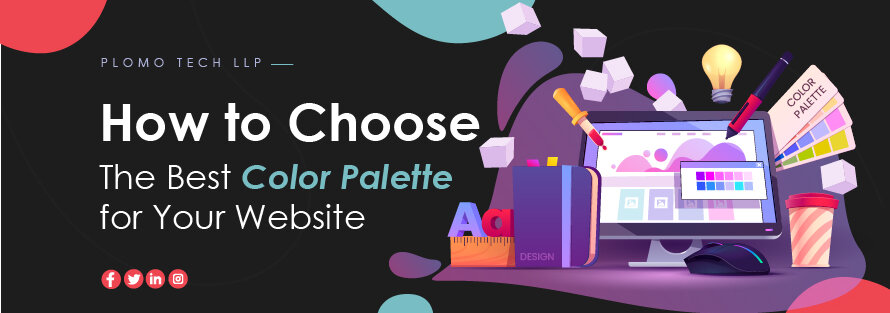A well-chosen color palette can make or break your website’s success. Colors influence user emotions, brand perception, and even conversion rates. But with endless options, how do you pick the right one?
In this guide, we’ll break down:
The psychology of colors & their impact on users
How to select a cohesive color scheme
Best tools for generating palettes
Common mistakes to avoid
Why Your Website’s Color Palette Matters
Colors aren’t just decorative—they shape user experience (UX) and brand identity.
-
First Impressions 94% of users judge a website based on visuals (including colors).
-
Brand Recognition Consistent colors increase brand recognition by 80%.
-
Conversions Strategic color choices can boost conversions by 24%.
Step 1
Understand Color Psychology
Different colors evoke different emotions. Here’s a quick breakdown:
|
Color
|
Emotion/Association
|
Best For
|
|---|---|---|
|
Blue
|
Trust, professionalism
|
Finance, tech, healthcare
|
|
Red
|
Urgency, excitement
|
Food, sales, entertainment
|
|
Green
|
Growth, health
|
Eco-friendly, wellness brands
|
|
Yellow
|
Optimism, warmth
|
Creative, youthful brands
|
|
Black
|
Luxury, sophistication
|
High-end fashion, premium products
|
|
Purple
|
Creativity, royalty
|
Beauty, spiritual, artistic niches
|
Pro Tip: Use cool colors (blue, green) for trust and calmness, and warm colors (red, orange) for urgency and action.
Step 2
Choose a Color Scheme Type
Not sure how to mix colors? Try these proven color schemes:
- Monochromatic – Different shades of one color (minimal & elegant).
- Analogous – Colors next to each other on the wheel (harmonious look).
- Complementary – Opposite colors (high contrast & bold).
- Triadic – Three evenly spaced colors (vibrant & balanced).
Example
- Dropbox uses blue (trust) with white (simplicity).
- Spotify combines green (energy) with black (premium feel).
Step 3
Use the 60-30-10 Rule
A balanced color palette follows this structure:
- 60% Dominant Color (background, main sections)
- 30% Secondary Color (buttons, headings)
- 10% Accent Color (CTAs, highlights)
Example
If your main color is navy blue (#0A2463), pair it with soft gray (#D9D9D9) and a bright orange (#FF6B35) for CTAs.
Step 4
Test for Accessibility
Your colors must be readable for all users. Check:
- Contrast Ratio (Use WebAIM Contrast Checker)
- Color Blind-Friendly (Avoid red-green combos)
- Dark/Light Mode Compatibility
Best Tools to Generate Color Palettes
- Coolors.co (Quick palette generator)
- Adobe Color (Advanced color wheel tool)
- Paletton (Simulates color blindness)
- Canva Color Palette Generator (Extract colors from images)
Common Mistakes to Avoid
- Too Many Colors Stick to 3-5 max.
- Poor Contrast Text should be easily readable.
- Ignoring Brand Identity Align with your logo & style.
- Forgetting Mobile Users Test on different screens.
Final Tips for a Winning Color Palette
- Start with your brand personality (e.g., playful vs. corporate).
- Use neutrals (white, gray, black) for balance.
- A/B test different CTA colors (e.g., red vs. green buttons).
- Stay consistent across all platforms (website, social media, ads).
- Need Help Designing Your Website?




